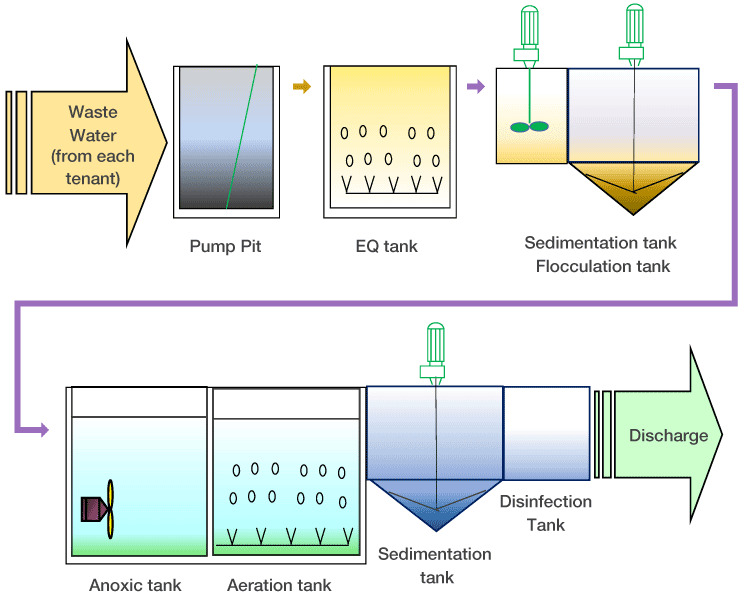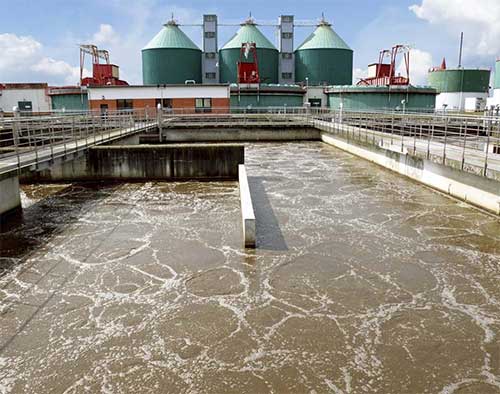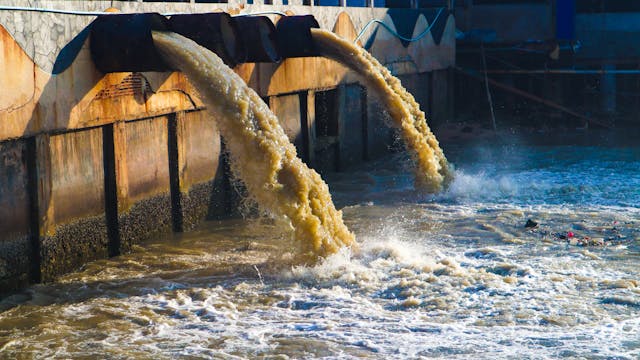Industrial Waste Water Treatment-- Reliable Waste Management for Manufacturing Facilities
Industrial Waste Water Treatment-- Reliable Waste Management for Manufacturing Facilities
Blog Article
Technologies and Advances in Industrial Waste Water Therapy Technologies
The landscape of commercial wastewater therapy is going through a transformative change, driven by technologies that enhance both efficiency and sustainability. As regulative standards develop, the combination of AI and machine discovering right into wastewater monitoring systems assures to streamline procedures and make certain compliance.
Overview of Waste Water Therapy Technologies
Wastewater treatment technologies include a range of approaches developed to get rid of impurities from industrial effluents before their release into the atmosphere. These innovations are crucial for maintaining ecological equilibrium and making sure compliance with ecological regulations. The primary groups of wastewater therapy consist of physical, chemical, and biological methods, each serving distinctive functions based upon the nature of the pollutants present.

Organic therapy techniques utilize microorganisms to degrade raw material, making them particularly efficient for organic-rich effluents. Strategies like turned on sludge and biofilm activators harness the all-natural deterioration abilities of microorganisms, resulting in substantial reductions in biochemical oxygen need (FIGURE)
Advanced Purification Strategies
Advanced purification methods represent an essential development in the realm of commercial wastewater therapy, improving the effectiveness of contaminant elimination procedures. Industrial Waste Water Treatment. These methods incorporate a series of technologies, consisting of microfiltration, ultrafiltration, nanofiltration, and reverse osmosis, which give consecutive barriers for numerous fragment dimensions and chemical frameworks
Microfiltration and ultrafiltration make use of membrane layer systems to get rid of suspended solids, bacteria, and larger natural particles, improving the quality of effluent prior to additional treatment. Nanofiltration bridges the gap between ultrafiltration and reverse osmosis, effectively getting rid of divalent ions and natural substances, thus lowering the load on downstream procedures.
Reverse osmosis supplies the highest degree of filtration by enabling just water and tiny molecules to travel through its semi-permeable membranes, making it ideal for reclaiming high-quality water from industrial effluents. Current innovations in membrane layer technology, consisting of the advancement of more fouling-resistant and resilient materials, have actually substantially boosted functional efficiency and minimized prices.
Integrating these innovative purification strategies not only enhances the total therapy procedure but additionally adds to sustainability efforts by allowing water reuse and source recuperation in commercial setups. (Industrial Waste Water Treatment)
Biological Treatment Developments

Furthermore, the development of engineered biological systems, such as membrane layer bioreactors (MBRs), incorporates biological treatment with innovative membrane layer filtration. This integration permits greater effluent quality and lowered footprint, making it suitable for space-constrained industrial centers. Advancements in genetically engineered microorganisms have actually also emerged, enhancing the biodegradation of details contaminants, such as pharmaceuticals and heavy steels, that are commonly testing to get rid of.
Additionally, the application of bioaugmentation approaches, where useful microbes are introduced to improve the existing organic therapy processes, has actually shown appealing lead to improving treatment efficiency. These advancements jointly indicate a fad in the direction of more sustainable and efficient organic therapy methods that can adjust to the advancing complexities of industrial wastewater streams. As sectors continue to focus on ecological conformity, these organic developments will play a critical role in wastewater management.

Resource Healing Techniques
In commercial settings, the combination of resource recovery methods has become significantly essential for improving sustainability and lessening waste. These approaches concentrate on extracting beneficial materials and power from wastewater streams, consequently transforming potential toxins into reusable sources.
One prominent method is nutrition recovery, where nitrogen and phosphorus, frequently existing in excess in wastewater, are captured and exchanged plant foods. This not only minimizes environmental effects but likewise supplies a round economic climate service for farming applications. Additionally, innovations such as anaerobic digestion enable for the conversion of natural waste into biogas, a sustainable power resource that can counter fossil fuel use in commercial operations.
Moreover, progressed filtering and membrane layer my response modern technologies promote the recovery of industrial by-products such as salts and metals. These recuperated products can be rehabilitated right into production processes, lowering the need for virgin resources.
Future Trends in Waste Water Monitoring
As markets progressively prioritize sustainability, the future of wastewater administration is established to undertake substantial makeovers. Technical innovations, such as artificial knowledge and artificial intelligence, will allow a lot more efficient surveillance and administration of wastewater systems. These modern technologies can forecast upkeep requirements, enhance treatment processes, and improve decision-making, inevitably reducing operational costs and ecological influence.
Additionally, the integration of round economic situation principles will certainly play a crucial duty in wastewater administration. Industries are anticipated to move in the direction of systems that not just treat wastewater but likewise recover beneficial resources, such as nutrients, water, and energy. This change will lessen waste and advertise the reuse of products, lining up with global sustainability goals.
Emerging treatment techniques, such as membrane bioreactors and progressed oxidation procedures, will additionally enhance the effectiveness of wastewater treatment, permitting better effluents appropriate for reuse. In addition, regulatory frameworks are most likely to evolve, highlighting more stringent requirements for wastewater discharge and encouraging industries to embrace cutting-edge therapy services.
Final Thought
Finally, the evolution of industrial wastewater treatment innovations demonstrates a significant change in the direction of improved performance and sustainability. Innovations in innovative filtering strategies, organic therapies, and source healing methods highlight the market's dedication to ecological stewardship. The integration of expert system and artificial intelligence better enhances these processes, guaranteeing regulatory compliance and advertising a round economic situation. Continued improvements in these locations will play an important role in forming the future of wastewater management and protecting vital water sources.
The landscape of industrial wastewater treatment is undertaking a transformative change, driven by innovations that enhance both effectiveness and sustainability.Wastewater treatment technologies include an array of approaches made to remove contaminants from commercial effluents before their release into the atmosphere.Utilizing the power of biological procedures has led to considerable developments in the treatment of commercial wastewater.Additionally, the implementation of bioaugmentation techniques, where advantageous microorganisms are introduced to additional resources boost the existing organic therapy go to this web-site processes, has shown appealing results in enhancing therapy efficiency. These technologies collectively indicate a fad in the direction of even more lasting and effective biological therapy techniques that can adjust to the developing complexities of industrial wastewater streams.
Report this page